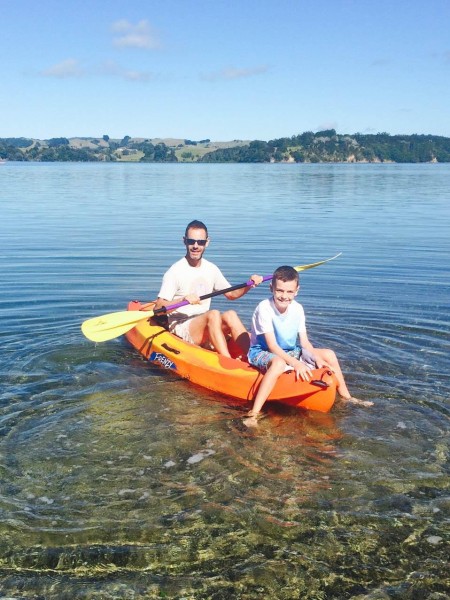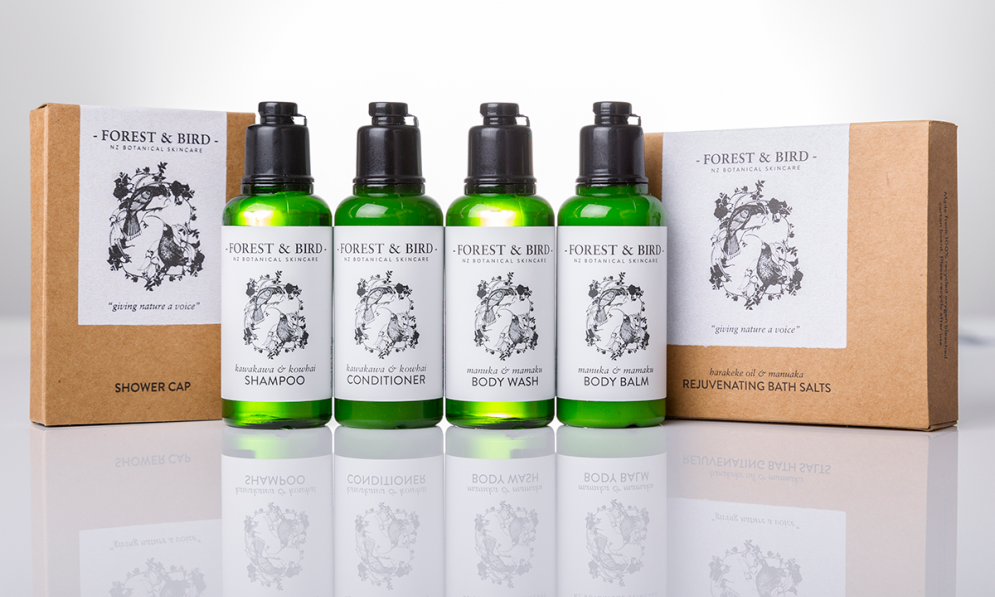Not all “environmentally friendly” packaging is created equal, as Toby Whyte, managing director of Health Pak, one of our supporters, explains.

Toby Whyte with his son Harvey at Mahurangi North of Auckland.
As a New Zealand manufacturer, one of the requests for products and packaging I get most often is asking for it to be “environmentally friendly”.
Can it be biodegradable, recyclable, compostable, sustainable, or natural? The list goes on. Obviously, it’s great people want this, but unfortunately, the biggest problem is that very few (and I mean very few) have any idea about what makes a product better for the environment. They don’t want to be told that making something biodegradable may, in fact, be the wrong choice.
Having been in this business for nearly 25 years, I can honestly say sometimes I even question what the best options for a particular product are.
Over the years, we have used additives that claim to make packaging “biodegradable”, packaging made from cornstarch or sugar, products and ingredients that claim to be natural or sustainable, the list goes on. While some have worked, others have not and I could write for days on this subject quite happily.
Below is a very basic (but hopefully helpful) summary of three basic areas in which we look to better assess a product and its packaging’s environmental claims or benefits.
Never take claims for granted
Unfortunately, in my experience, many salespeople marketing the environmental aspects of their products are too far removed from the source.
They look at it as an easy way to sell their product and don’t truly understand what they are selling or whether the claims being made are in fact relevant or true.
A lot of this is because the product, ingredient, or additive is made offshore, and, by the time it gets to the person selling it, the claims are just assumed to be true, have not been explained correctly, or simply don’t work within New Zealand because of the way in which we process post-consumer waste.
Where the product comes from and where it ends up is just as important as the product itself
People still don’t realise the terrible environmental standards that still exist in many countries and also the horrifying distance a product can travel during the manufacturing process before it gets sold here.What are the manufacturing company’s or country’s environmental standards, and how far has it travelled to get here?
At the other end of the spectrum, very few people also consider where the product or packaging will end up after they have used it. You might think that you are doing the right thing buying packaging that claims to be compostable, but if it all goes into the bin and ends up in landfill then it will never compost.
The same applies to recycling – many products that claim to be “recyclable” cannot be recycled within New Zealand.
What works for one product may not be the best option for the next
Don’t get stuck on there being one right answer for everything. We have found that every product gets sourced, made, used, and disposed of in different ways, whether commercially or domestically.
We have a myriad of options in packaging – for example, from recyclable to degradable – depending on the product. While it would be great to have one option that fits all, this train of thought can cause more problems than it solves.
Some packaging, for example, can be made to degrade faster when in contact with light and oxygen (outside), while another can degrade in conditions with no light and oxygen (landfill); however, both are equally hopeless in the opposite conditions.
In summary, even after having considered the above areas as a company, we still have a lot of debate about whether we have the best option.
In many cases, this is ongoing, and there are times where we have sheepishly reverted to the ingredients, packaging, or processes we had originally rather than the fancy new technology we thought would save the planet.
However, this process, I would like to believe, has given us more knowledge to make better decisions for the future. I hope this has helped give an insight into all the environmental claims in the marketplace and some idea of how to test them. You may even choose the product that has none!
Our partners
Health Pak is one of New Zealand’s largest contract packaging companies. Long before it was a widely raised issue, Health Pak was making its products as environmentally friendly as possible.
Its hair and body care products have been made using biodegradable formulations for more than 10 years. And it is leading the way with its degradable packaging and soap recycling programmes.
Forest & Bird Magazine
Join Forest & Bird and receive our popular quarterly magazine, packed with feature articles, news and photographs on New Zealand’s unique wildlife and wild places.

